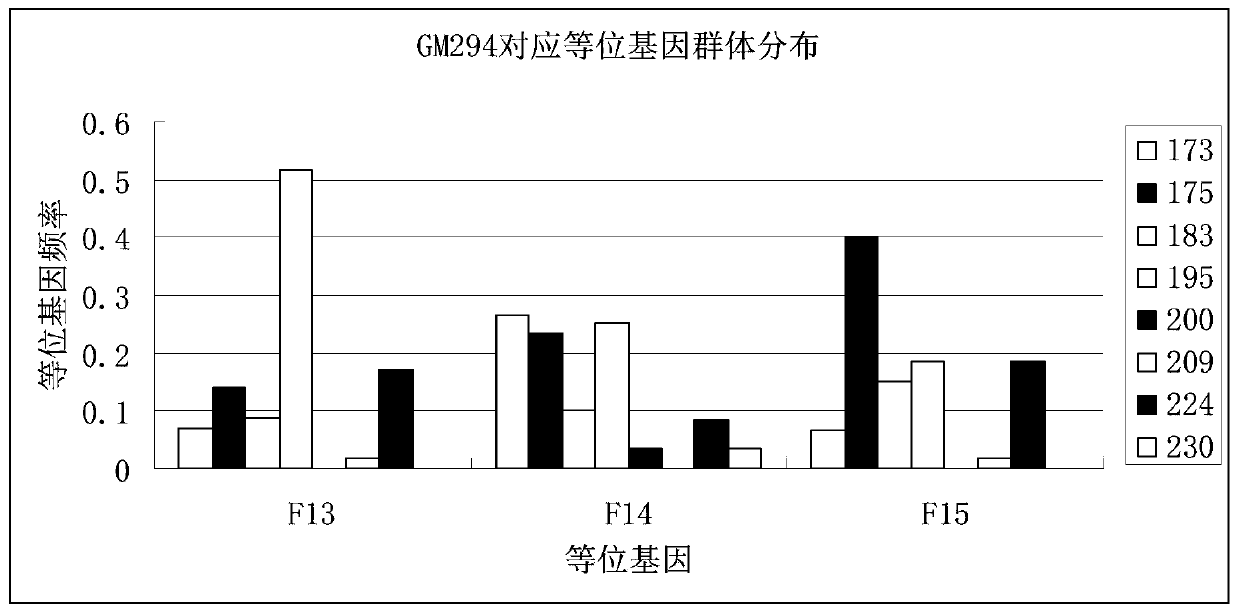Tilapia mossambica and microsatellite identification primer and method for genetic diversity of tilapia mossambica
A technology of genetic diversity and microsatellites, which is applied in the field of microsatellite identification primers for tilapia and its genetic diversity, can solve the problems of affecting the breeding effect, bottleneck effect, and reduction of the number of effective populations, and achieve good separation effect Effect
- Summary
- Abstract
- Description
- Claims
- Application Information
AI Technical Summary
Problems solved by technology
Method used
Image
Examples
Embodiment 1
[0040] A microsatellite identification method for tilapia and its genetic diversity, comprising the following steps:
[0041] (1) Material selection: Select "Xin Jifu" tilapia breeding lines F13, F14 and F15 respectively, wherein the number of samples of F13 is 29, and the number of samples of F14 and F15 is 30. The tail fin of each specimen is cut and numbered Store in 95% ethanol for later use;
[0042] (2) Extraction of genomic DNA: use the tissue / cell genomic DNA rapid extraction kit to extract the genomic DNA of each tail fin of the specimen in step (1), and detect the concentration and purity of the DNA by agarose gel electrophoresis, and pass the detection DNA extracts were numbered and stored in a -40°C refrigerator for later use;
[0043] (3) Screening of microsatellite primers: 50 published Nile tilapia microsatellite loci were retrieved from the GenBank database, and Primer5.0 software was used to design primers to screen 15 pairs of effectively amplified microsate...
PUM
 Login to View More
Login to View More Abstract
Description
Claims
Application Information
 Login to View More
Login to View More - R&D
- Intellectual Property
- Life Sciences
- Materials
- Tech Scout
- Unparalleled Data Quality
- Higher Quality Content
- 60% Fewer Hallucinations
Browse by: Latest US Patents, China's latest patents, Technical Efficacy Thesaurus, Application Domain, Technology Topic, Popular Technical Reports.
© 2025 PatSnap. All rights reserved.Legal|Privacy policy|Modern Slavery Act Transparency Statement|Sitemap|About US| Contact US: help@patsnap.com



